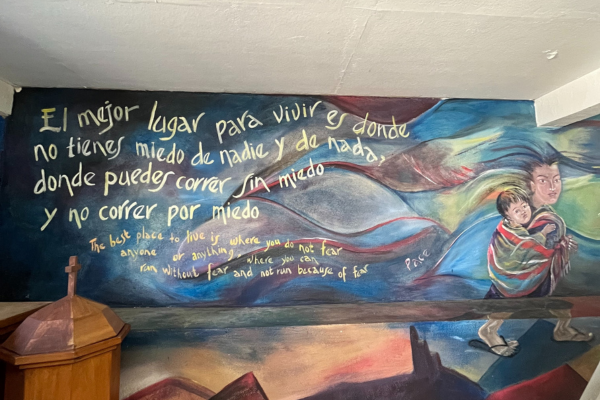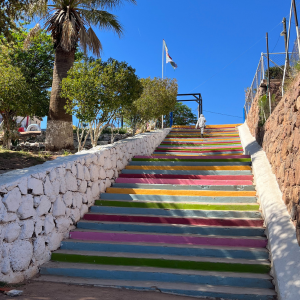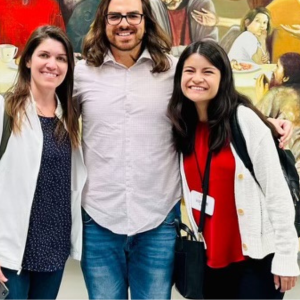 Every time I visit the US-Mexico border, I feel two very different emotions: horror and gratitude. Horror, because of the harm people from all over the world experience that forces them to leave their homes and walk for hundreds—if not thousands—of miles. And gratitude, because there are countless relief workers providing lifesaving humanitarian aid in shelters, along the border wall, and in the street, honoring their human dignity and right to seek asylum.
Every time I visit the US-Mexico border, I feel two very different emotions: horror and gratitude. Horror, because of the harm people from all over the world experience that forces them to leave their homes and walk for hundreds—if not thousands—of miles. And gratitude, because there are countless relief workers providing lifesaving humanitarian aid in shelters, along the border wall, and in the street, honoring their human dignity and right to seek asylum.

Along the 30-foot-high border wall built through the remote, steep hills of the Sonoran Desert in Arizona, a dozen current and former teachers, humanitarian organization leaders, Tucson residents, and volunteers from out of town come together to provide care. They help alleviate suffering with clean water, granola bars, first aid, and phone-charging stations. For many migrants, they are the first faces offering a smile and support in many weeks or months. Without these humanitarians, migrants and people seeking asylum would be at greater risk of medical distress or getting lost in the desert.
At a shelter in northern Mexico for migrants and people seeking asylum, I interviewed a Senegalese lesbian woman who fled her home because an uncle harmed her and she did not feel safe in Senegal. She traveled alone through Mexico and survived an attempted rape in Nogales after being asked for money, patted down, and sexually assaulted. When fighting her attacker off, she broke her foot and was hospitalized. Since she was attacked, she has tried every day for more than two months to get an appointment on a US government mobile app, CBP One, to seek safety. This appointment is the only way she can seek protection without having severe restrictions applied to her asylum application.

At the port of entry in Nogales, families sleep outside without shelter or security for months on a metering waitlist to seek safety. Every day, they try to get CBP One appointments, but the demand far outweighs the 100 available appointments each day. One Mexican family told me that they fled their home in Puebla after a masked group threatened to kill them because they could not pay the daily money demanded and the police, having been paid off by the group, would not protect them. They had been trying to get a CBP One appointment for three months. Three other Mexican families from Guerrero were also sleeping at the port of entry and had been trying to get CBP One appointments for half a year.
It doesn’t have to be this way. No family or person should be forced to risk their lives to seek safety. Despite all of these challenges, people seeking asylum are resilient and flee their homes because they have no other choice. In the absence of government support and coordination, volunteers and civil society organizations step up to prevent loss of life and welcome people seeking asylum with dignity.
The Women’s Refugee Commission shares these stories with policymakers in Washington to advocate for more humane migration policies. We recommend that people be allowed to seek asylum to enter the United States—no matter their nationality, manner of entry, or ability to use a mobile app. Land ports of entry should be accessible to all people looking to exercise their legal right to seek asylum. And we urge Congress to fund local communities that ensure that families and individuals seeking safety in the US have their basic needs met and receive the support they need to understand their immigration proceedings and reunite with loved ones.

